Article Summary:
This article talks about why pasture plate meters are a piece of equipment from the past and are not good enough for today's farming practices.
There are numerous hardware devices and other services that try to deliver value, and all are falling short.
However, our company brings a new technology to the world with machine learning that works through satellite imagery, local weather information and paddock activities. It is a truly disruptive service to the hardware device of the rising plate meter, and it is making sure cows don't go hungry.
Pasture Measurement Intro
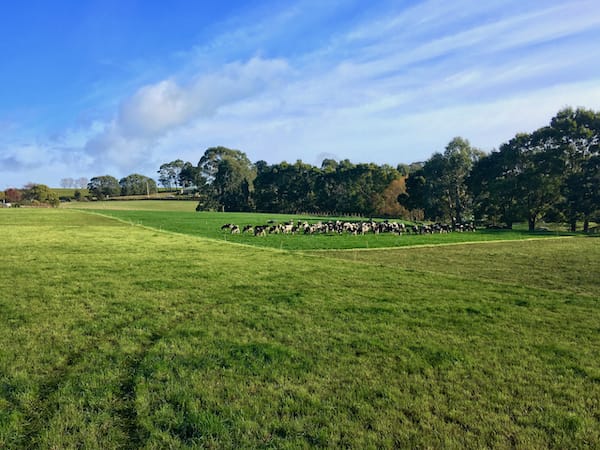
The pasture measurement process is one of the most crucial roles for any agronomist, farm consultant or field manager working in the dairy industry or on a dairy farm (this could read beef or sheep farm too). Perfecting our understanding of how much pasture is in a paddock with a device is as much a priority as actually getting out there to determine the dry matter in your paddocks.
This one sentence above is why we dedicate our company to delivering an accurate pasture measurement.
Well, each season, we all want well-fed cows on nutritious pastures. We all want to ensure cows get high-quality pasture and the feed wedge reflects this with our grazing management.
Not one to wait for the next drought-busting rain, let's dive right into this article on pasture plate meters.
Is the trusty Pasture Plate Meter so trusty?

Rising plate meters are no longer good enough since they don't allow the user to accurately measure each blade of grass (or leaf) separately.
This can lead to an inaccurate calculation of pasture consumption rates, which means that feed budgets are incorrect or that pasture allocation is terribly inaccurate.
These errors in allocation and forecasting make it extremely difficult to ensure farm profitability and sustainable environmental management practices.
The rising plate meter doesn't give an accurate reading because it only measures height instead of individual blades of grass; there's no way to know if 100 small plants were measured instead of 10 larger plants.
If you're a seasoned farmer, you would know that rising plate meters are not accurate enough to use in today's farming practices.
Of course, there is a bit of tongue in check with measuring individual plant leaves. However, this is neither practical nor necessary, which we'll explore further in this article. But, it does go a long way in highlighting the absurdity of how accurate one measurement device is over another.
Let's continue.
The Number of Pasture Measurements Matter
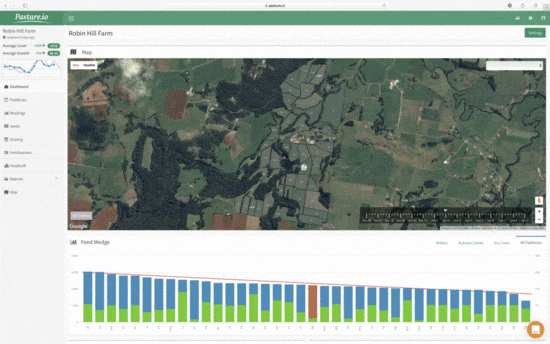
Yes, the number of pasture measurements across an entire paddock matters. Let's explore why with a little understanding of what happens in paddocks.
Do you think cows stand in the same spot all day long?
Of course not; they wander from one end of the paddock to the next, feeding as they go. This means they distribute their own fertiliser in cow manure and urine. Combine this with sheltered areas, drinking troughs, topography, and you get a rough understanding of the nutrient and moisture distribution across paddocks.
Why is this so important
Because it impacts the growth of pastures! Not only this, pasture growth will vary across an entire paddock, even a flat paddock.
When it comes to regularly walk the farm to measure how much pasture cover is on hand, there is nothing quite like finding the path of least resistance.
We've all seen it. We've seen staff cut corners, measure gateways and guess!
Now, what if there was a way to measure every square meter of your farm regularly?
Let's explore this further in this article.
Pasture Measurement Devices and Tools
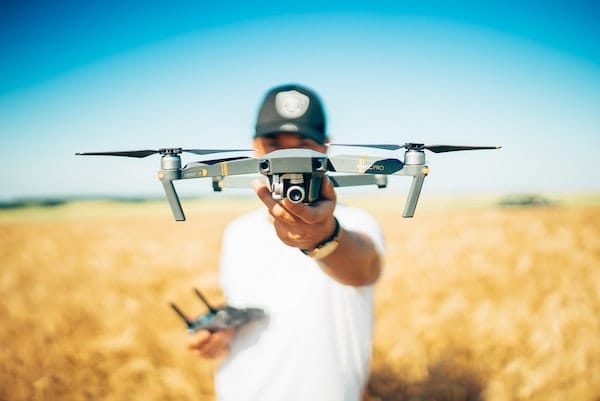
Now, there are several pasture measurement devices that farmers can utilise for measuring grass. Such tools will go the distance, and some, not so much.
Before the season grows old, look at this list:
- Rising plate meter (also known as a pasture plate meter, and better than your eyeball!)
- C-Dax pasture meter (a tool known as the consistency king of the hardware)
- Ellinbank pasture reader (similar accuracy to a c dax pasture meter except not on the undulating ground)
- Pasture probe (this tool is not worthy of a comment!)
- Your eyeball (gosh, what's your pasture utilisation like, come on, let's get measuring!)
- Drones (cm pixel resolution, sounds fancy, so is the cost of doing business!)
- Satellites (m pixel resolution and our very own favourite technology for an accurate pasture measurement)
Rising Plate Meter in Simplified Terms
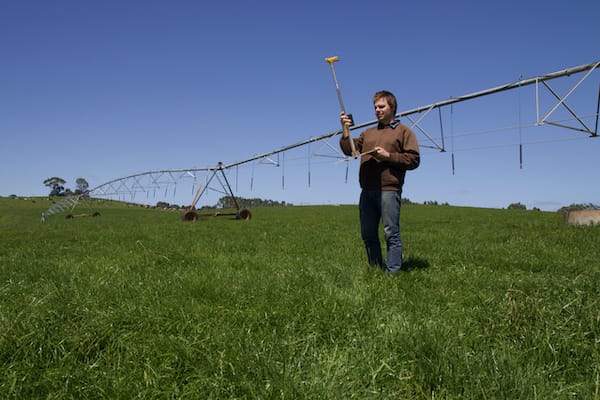
The rising plate meter is, in most cases, more accurate than using your eyeball since it provides a standard way of measuring with a reasonable variance of accuracy with compressed height and a calibration equation.
With rising plate meters, electronic components have been added to help users measure plant height more accurately and remove the burden of pencilling down the pasture measurements. However, rising plate meters are still limited in their ability to accurately assess pasture covers, given the few point measurements taken across a paddock.
Typically, a farmer walks a diagonal transect from one paddock to the next, taking approximately 40 odd plonks. But, as explained above, some walk past the gateway!
The typical range of 30 to 60 plonks across paddocks is beneficial when the practice becomes a regular farm assessment. At most every 10-days apart through the winter (when pasture growth rates are at their slowest) and at the quickest end every 4-days apart in spring.
This allows pasture data to be collected on average from week to week, generally giving value through assessing the most vital metric on a farm where the dominant feed for livestock is pasture.
C-Dax Pasture Meter
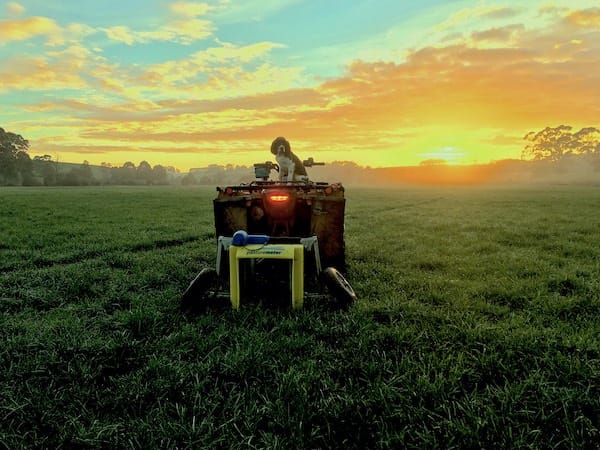
This article is focused on the pasture plate meter, but all other forms of pasture measurement are exceedingly similar in their ability to measure height and pasture cover accurately.
The c dax pasture meter communicates with the farmer and computer either through pen and paper or an electronic reader giving momentary readings noting either the height or calibrated ground cover.
So, what improvement is in the technology of the c dax pasture meter from the pasture plate meter?
Well, the C-Dax pasture meter takes approximately 200 measurements every second (it's a blitz!) as it cruises across paddocks. Not only is this a phenomenal amount of data, but it helps smooth out any anomalies, anomalies that are very regular with a pasture plate meter.
I mean, think about it. How many pug holes have you measured with a rising plate meter?
If you take 40 plonks across a paddock and 4 of those land in a pug hole, you're looking at 10% of your measurements as pug hole measures!
The C-Dax pasture meter isn't without its flaws.
In summer, when dust or grass seed is an issue, this quickly covers the sensors. Likewise, when the pasture is dewy or wet from rain, the sensor gets wicked with grass leaves and mud.
I can't count the number of times I have to stop mid paddock, making sure the sensors are clean. The latest C-Dax pasture meter's come with covers that protect the sensors, but it is still such a painful issue to deal with. So I'm not going to touch on what cow manure is like on these tools.
Then there is the maintenance of these tools that shouldn't be underrated! But we won't go into much more because things like maintenance and labour are already fairly well understood.
This tool was invented in New Zealand, which is the land of green grass and rotational grazing. It works well, don't get me wrong, but it still has many flaws to overcome, and this brings me to a hardware and labour free tool.
Automatic Pasture Measurements
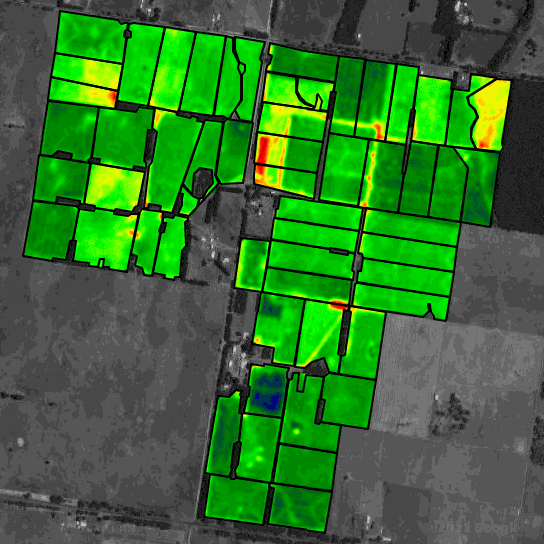
This is the newest technology on the block.
It is widely available to farmers not just in New Zealand and Australia but globally. In fact, this agtech is improving pasture management on farms in Latin America, South Africa, the United Kingdom, and North America, not to mention other parts of the world where pasture grows lush!
Farmers using this tech can reduce input costs on fertiliser and reduce buying expensive feed such as silage. In addition, farmers can make precision management decisions with an automated feed wedge with the data that lands on their phone, tablet and computer.
Automatic pasture measurements are perhaps better known as satellite pasture measurements or remote pasture measurements. They are a true form of freeing expensive on-farm labour and enabling enhanced pasture management.
There is one company doing this well, and that is our company at Pasture.io. Our service brings new technology to the world with machine learning that works through satellite imagery, local weather information and paddock activities.
It is a truly disruptive service to the hardware device of the pasture plate meter, and it is making sure cows don't go hungry.
Until we meet again, Happy Farming!
- The Dedicated Team of Pasture.io, 2021-09-15